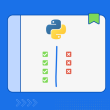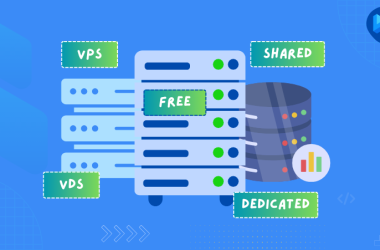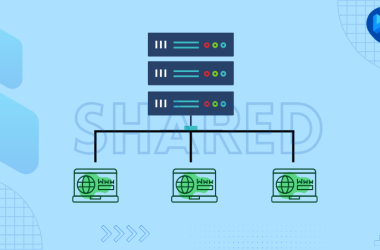Python has risen to become one of the most popular and versatile programming languages in the world. Its simplicity and readability have made it a favorite among both beginner and experienced developers. However, like any programming tool, Python has its strengths and weaknesses. Understanding these is crucial to making informed decisions on when and how to use Python in different projects.
In this article, we will explore the advantages and disadvantages of Python, providing a balanced perspective on its suitability for various applications. Let’s examine both the pros and cons of Python, comparing its functionality and performance with other programming languages.
What is Python?
Python is a high-level interpreted programming language developed by Guido van Rossum, and it was first released in 1991. The language was designed with simplicity and readability in mind, making it an excellent choice for beginners. Python allows developers to express complex ideas in fewer lines of code compared to languages like C++ or Java.
Python has become widely popular due to its broad range of applications. It’s used in everything from web development and data analysis to artificial intelligence (AI) and machine learning (ML). Python’s extensive library and framework support make it an attractive option for developers working in different domains, including finance, healthcare, education, and entertainment.
Why Use Python?
Python’s popularity isn’t coincidental. It offers numerous benefits that appeal to developers at all skill levels. Below are some key reasons why developers love Python:
Code Is Easy to Read and Maintain
Python’s syntax is clean and readable, making it easy to write and maintain code. The language’s design philosophy emphasizes the use of white space to improve code readability. This reduces the likelihood of errors and makes it easier for developers to understand the code, even if they didn’t write it themselves.
High Compatibility
Python runs on a variety of platforms, including Windows, macOS, Linux, and UNIX. This cross-platform compatibility is beneficial for teams working in different environments, as the same Python code typically runs with little to no modification.
Powerful Standard Library
Python comes with an extensive standard library, which includes modules for file handling, networking, database manipulation, and more. This allows developers to complete many tasks without needing third-party libraries, saving time and effort in the development process.
Multiple Programming Models
Python supports multiple programming paradigms, including object-oriented, procedural, and functional programming. This flexibility allows developers to choose the best approach for their project and gives Python an edge in a variety of applications.
Simplifies Complex Software Development
Python’s simplicity and high-level nature make it ideal for tackling complex software development projects. Its dynamic typing, dynamic binding, and built-in data structures make it suitable for building large-scale applications with minimal effort.
Numerous Open-Source Frameworks and Tools
Python has a thriving ecosystem of open-source frameworks and tools, such as Django, Flask, Pandas, NumPy, and TensorFlow. These tools streamline development by providing ready-made solutions to common programming challenges in web development, data analysis, AI, and other areas.
Test-Driven Development
Python supports test-driven development (TDD), which encourages writing tests before coding the actual program. Tools like unittest and pytest make it easier to write and run tests, ensuring code quality and reducing bugs in production.
Pros and Cons of Python
While Python offers a number of great advantages, it also has certain limitations. Here’s a detailed look at both the pros and cons:
Advantages of Python
- Easy to Learn and Use
Python’s syntax is simple and intuitive, making it easy for beginners to pick up. Developers can become productive quickly and start creating programs with minimal prior experience. - Versatile and Extensible
Python is highly versatile, used in various fields ranging from web development to AI and data science. It’s also extensible, meaning it can be integrated into other programming languages like C++ and Java when necessary. - Strong Community Support
Python boasts a large, active community of developers. Whether you need tutorials, documentation, or third-party libraries, Python’s community provides extensive resources to assist developers. - Cross-Platform Compatibility
Python runs on multiple operating systems, making it easy to develop applications that work across different platforms without much modification to the codebase. - Extensive Libraries and Frameworks
Python’s large collection of libraries and frameworks saves developers time and effort. Whether you’re building web apps with Django or analyzing data with Pandas, Python provides ready-to-use tools for many common tasks.
Take Your Python Projects to the Next Level!
Ready to use Python’s versatility and power for your next project? Whether you’re building web applications, conducting data analysis, or developing desktop apps, we offer optimized Python Hosting solutions to ensure your projects run smoothly.
Disadvantages of Python
- Slower Execution Speed
Python is an interpreted language, which makes it slower than compiled languages like C++ or Java. This can be a disadvantage in performance-critical applications where speed is crucial. - High Memory Consumption
Python tends to consume more memory compared to other languages, which can become a bottleneck when working with large applications, especially on memory-constrained systems. - Weak in Mobile Computing
While Python excels in server-side development, it is not commonly used for mobile development. For mobile app development, languages like Swift (for iOS) or Kotlin (for Android) are more popular choices. - Runtime Errors
Python is dynamically typed, meaning that types are determined at runtime. This can lead to runtime errors if a variable is used inappropriately. Static typing in other languages (e.g., Java) can catch errors before runtime.
Comparison of Advantages and Disadvantages of Python
| Advantages | Disadvantages |
|---|---|
| Easy to read and maintain | Slower execution speed |
| High compatibility across platforms | High memory consumption |
| Powerful standard library | Weak in mobile computing |
| Supports multiple programming models | Prone to runtime errors |
| Simplifies complex software development | |
| Extensive open-source frameworks and tools | |
| Strong community support |
Applications of Python
Python’s versatility makes it suitable for a wide range of applications. Below are some of the most common areas where Python is used:
Web Development
Python is widely used in web development, especially with frameworks like Django and Flask. These frameworks help developers build secure, scalable, and maintainable web applications quickly.
Data Analysis and Data Science
Python is a top choice for data scientists and analysts, thanks to libraries like Pandas, NumPy, and Matplotlib. These tools help with data manipulation, analysis, and visualization. For machine learning, Python’s frameworks like TensorFlow and Scikit-learn are incredibly popular.
Scientific and Numeric Computing
Python is also used in scientific computing. Libraries like SciPy and SymPy enable complex mathematical operations, simulations, and research computations.
Desktop GUI Applications
Python can be used to build desktop applications with graphical user interfaces (GUIs). Libraries such as Tkinter and PyQt provide developers with the tools to create user-friendly, visually appealing apps.
Network Programming
Python supports network programming through modules like socket. These tools allow developers to create applications that communicate over networks, useful for client-server applications or network protocols.
Game Development
Python has libraries like Pygame for developing simple 2D games. While not as powerful as C++ for complex games, Python can still be a valuable tool for prototyping or small-scale projects.
Education and Scripting
Due to its simplicity, Python is often taught in educational institutions as an introductory programming language. It’s also used for automating small tasks or scripting, making it an excellent choice for beginners learning programming concepts.
Conclusion
Python is a powerful, multifunctional programming language that is easy to learn, highly versatile, and supported by a large, active community. While it does have some disadvantages, such as slower execution speed and high memory consumption, its many advantages, including simplicity, vast libraries, and cross-platform compatibility, make it an appealing choice for a wide variety of applications.
Understanding both the strengths and weaknesses of Python allows developers to make informed decisions about when and how to use the language in their projects. Whether you’re working on web development, data analysis, or machine learning, Python offers the tools and flexibility needed to build successful applications.
At WaseerHost, we offer optimized hosting solutions for Python projects, ensuring your applications run smoothly and efficiently. Ready to start your next Python project? Explore our Python Hosting services today!
FAQ
Can Python be used for mobile apps?
While Python is not commonly used for mobile development, frameworks like Kivy and BeeWare allow developers to build mobile applications using Python.
Is Python suitable for game development?
Yes, especially for 2D games with libraries like Pygame, though C++ is preferred for complex 3D games.
How does Python handle databases?
Python easily integrates with databases using libraries like SQLite, MySQL, and PostgreSQL.
Is Python good for automation?
Yes, Python excels at automating tasks due to its simple syntax and extensive libraries.
Can Python be used for real-time apps?
Yes, with frameworks like Twisted and asyncio, though it’s not optimized for high-speed real-time tasks.
What’s Python’s role in AI/ML?
Python is a top choice for AI/ML, with powerful libraries like TensorFlow and Scikit-learn.
Can Python scale for large projects?
Yes, especially with frameworks like Django, though large-scale systems may need performance optimizations.










